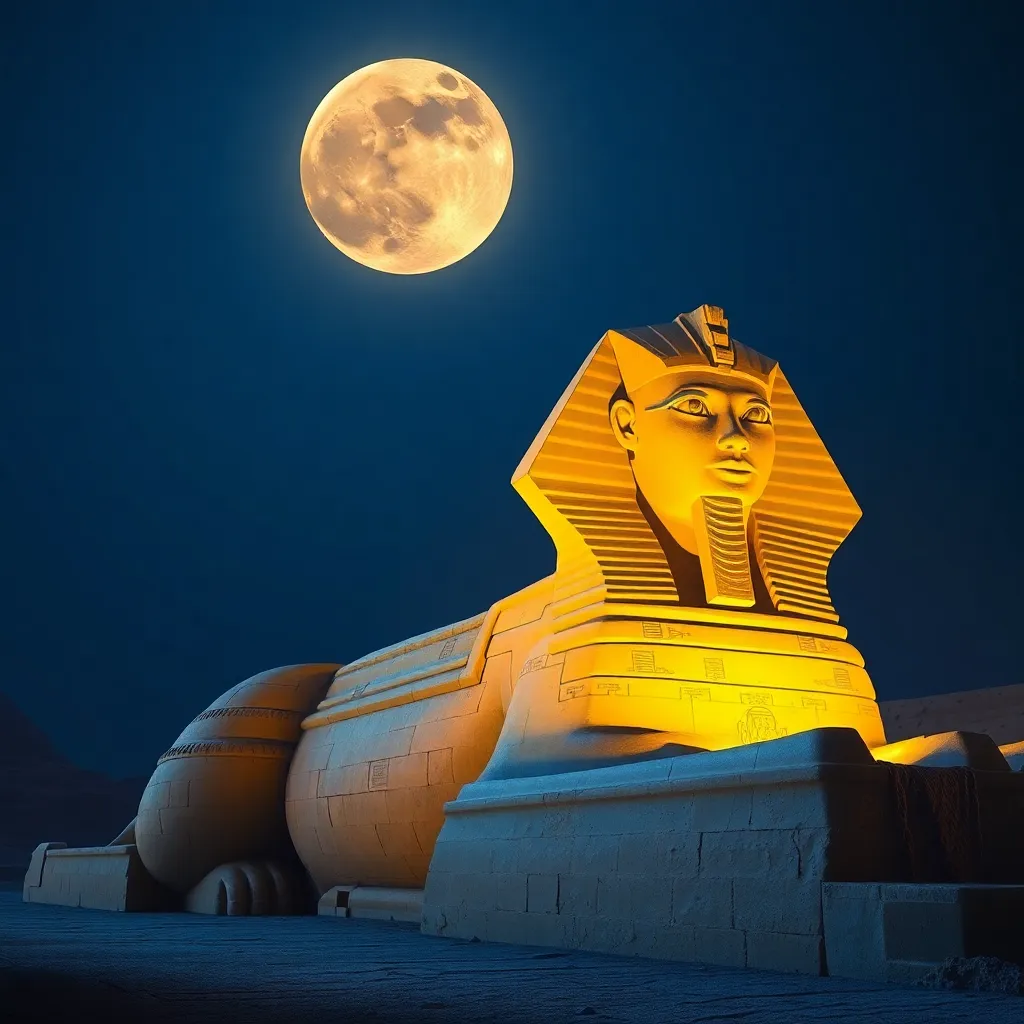The Sphinx in Egyptian Folklore: Tales of Wonder
I. Introduction
The Sphinx is one of the most iconic symbols of ancient Egypt, embodying the mysteries and grandeur of a civilization that flourished for thousands of years. This mythical creature, with the body of a lion and the head of a human, has captivated the imagination of people throughout history. Its significance in Egyptian culture extends beyond mere artistry; it is intertwined with themes of protection, wisdom, and the divine.
This article aims to explore the multifaceted role of the Sphinx in Egyptian folklore and mythology. By delving into its origins, symbolism, and the rich tapestry of tales surrounding this enigmatic figure, we will uncover the enduring legacy of the Sphinx in both ancient and modern contexts.
II. The Origins of the Sphinx
A. Historical context: The creation and purpose of the Sphinx in ancient Egypt
The Great Sphinx of Giza, believed to have been constructed during the reign of Pharaoh Khafre around 2500 BCE, serves as a monumental testament to the architectural ingenuity of ancient Egyptians. Its purpose was multifaceted; it was not only a guardian of the Giza Plateau but also a reflection of the pharaoh’s power and divine right to rule.
B. Symbolism of the Sphinx in Egyptian art and architecture
In Egyptian art, the Sphinx symbolizes strength, wisdom, and protection. The lion’s body represents ferocity and power, while the human head often signifies intelligence and insight. Sphinxes were commonly placed at the entrances of temples and tombs, serving as protectors against intruders and malevolent forces.
III. The Sphinx as a Guardian Figure
A. The role of the Sphinx in protecting tombs and sacred spaces
The Sphinx was believed to safeguard the souls of the deceased and the sanctity of sacred spaces. With its imposing presence, it acted as a sentinel watching over the tombs of pharaohs, ensuring that their eternal rest remained undisturbed. The alignment of the Sphinx with the stars and the sun further reinforced its protective role.
B. Folklore tales depicting the Sphinx as a sentinel of wisdom and knowledge
- One popular tale tells of the Sphinx imparting wisdom to those deemed worthy, testing their knowledge before granting them access to sacred knowledge.
- In another story, the Sphinx is said to have challenged travelers with riddles, rewarding those who answered correctly with safe passage.
IV. The Riddle of the Sphinx
A. The famous riddle and its connection to Oedipus in Greek mythology
The most famous anecdote involving the Sphinx is its riddle in Greek mythology: “What walks on four legs in the morning, two legs at noon, and three legs in the evening?” This riddle was posed to travelers, and failure to answer correctly meant death. Oedipus ultimately solved the riddle, leading to the Sphinx’s demise.
B. Interpretations and variations of the riddle in Egyptian folklore
In Egyptian folklore, the riddle of the Sphinx is often seen as a metaphor for the journey of life and the pursuit of wisdom. Variations of the riddle emphasize themes of duality and the transitions in human existence, highlighting the Sphinx’s role as a guardian of knowledge.
V. The Sphinx in Egyptian Mythology
A. Connections to the gods: How the Sphinx embodies divine attributes
The Sphinx is often associated with various deities in Egyptian mythology, particularly the sun god Ra and the god of wisdom, Thoth. The creature embodies attributes of both divinity and humanity, reflecting the belief in the interconnectedness of the earthly and the divine.
B. Myths and legends featuring the Sphinx as a character or symbol
Numerous myths feature the Sphinx as a pivotal character:
- The Sphinx is said to have guarded the secrets of the afterlife, revealing them only to those who proved their worth.
- Some legends depict the Sphinx as a protector of the Pharaohs, ensuring their safe passage to the afterlife.
VI. Modern Interpretations and Cultural Impact
A. The Sphinx in contemporary literature and media
In modern times, the Sphinx continues to inspire literature, films, and artworks. Its enigmatic nature has been utilized in various narratives that explore themes of mystery, knowledge, and the supernatural. Authors and filmmakers often draw upon the Sphinx’s symbolic weight to convey deeper meanings.
B. The Sphinx as a symbol of mystery in popular culture
Today, the Sphinx is synonymous with mystery and enigma. It appears in various cultural artifacts, including:
- Artworks that draw on its imagery to evoke a sense of ancient wisdom.
- Films and television shows that incorporate its riddles as plot devices.
VII. Comparative Analysis with Other Cultures
A. Similar mythological creatures in other ancient civilizations
The Sphinx is not alone in the realm of mythological creatures. Other ancient civilizations have their own versions, such as:
- The Greek Chimera, a monster with a lion’s head, goat’s body, and serpent’s tail.
- The Hellenistic Sphinx, which also posed riddles but was often depicted as more malevolent.
B. The Sphinx’s influence on global folklore and storytelling traditions
The concept of a creature that combines human and animal traits has influenced storytelling across various cultures, symbolizing the struggle between knowledge and ignorance, life and death, and the seen and unseen worlds.
VIII. Conclusion
A. Recap of the Sphinx’s significance in Egyptian folklore
The Sphinx stands as a monumental symbol of ancient Egyptian culture, embodying wisdom, protection, and the divine. Its tales of wonder reflect the complexities of human existence and the pursuit of knowledge.
B. Reflection on the enduring legacy of the Sphinx in modern culture and mythology
As we continue to explore the mysteries of the Sphinx, its legacy remains vibrant in contemporary culture, reminding us of the timeless nature of myths and the universal search for understanding that transcends time and space.




